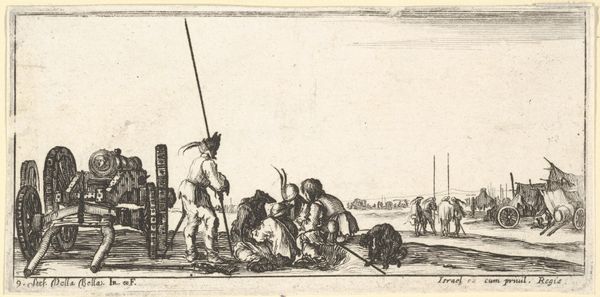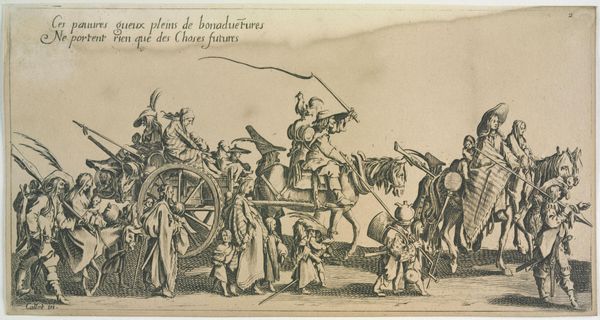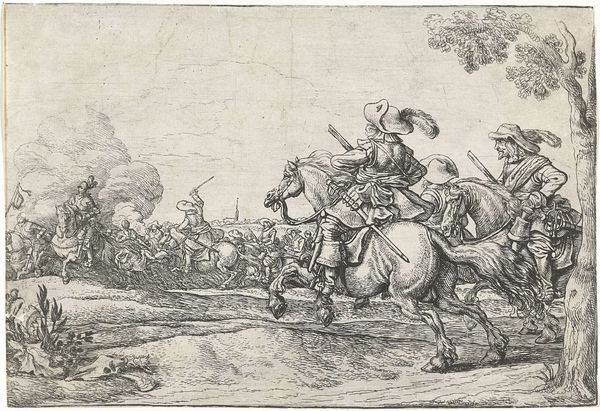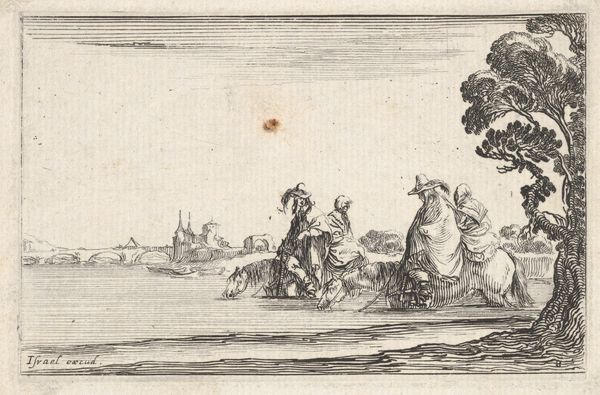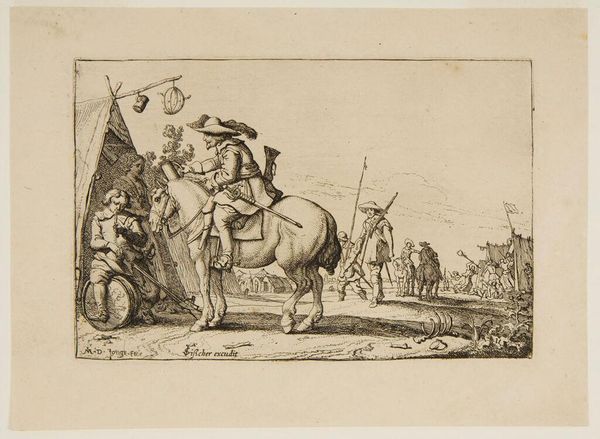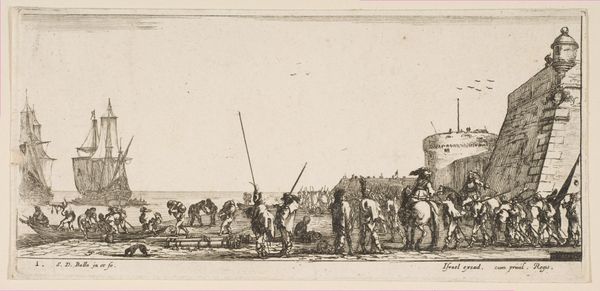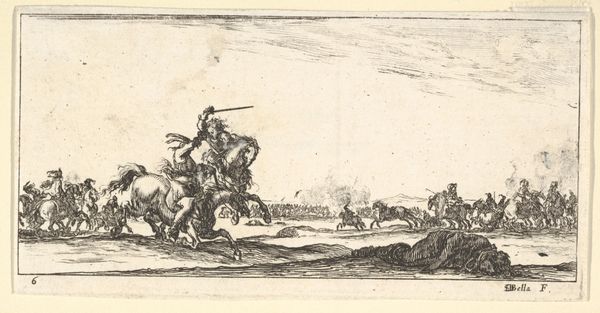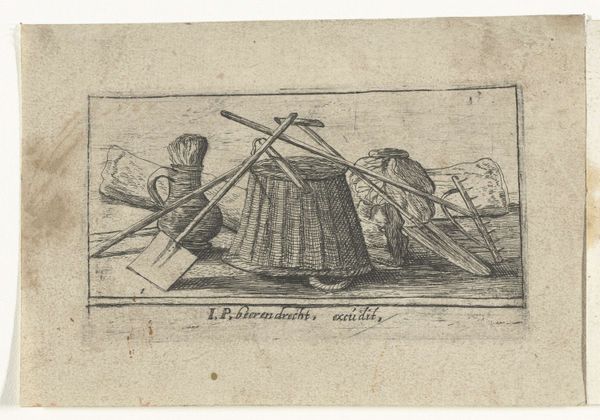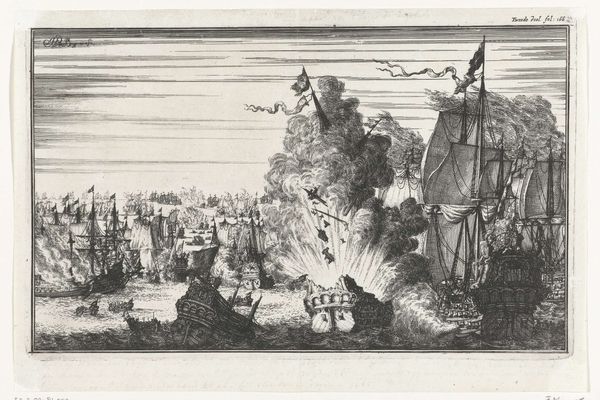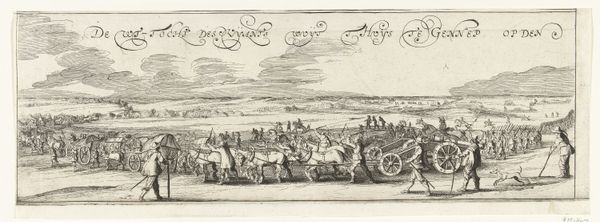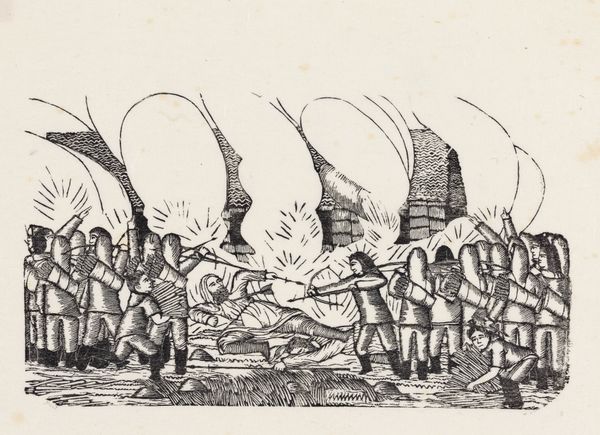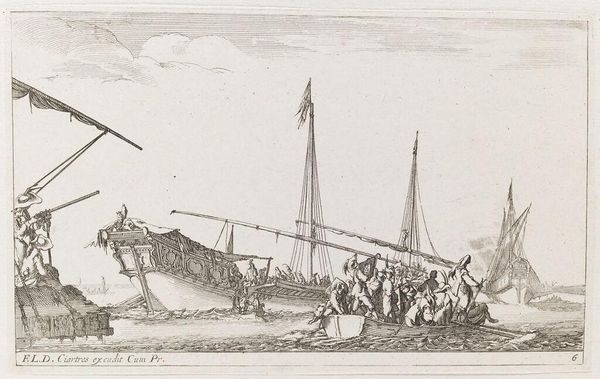
Plate 10: a soldier charging a cannon in center, other soldiers with picks standing at left and right, from 'Troops, cannons, and attacks on towns' (Dessins de quelques conduites de troupes, canons, et ataques de villes) 1635 - 1645
0:00
0:00
drawing, print, engraving
#
drawing
# print
#
genre-painting
#
history-painting
#
engraving
Dimensions: Sheet: 2 1/2 x 5 in. (6.3 x 12.7 cm)
Copyright: Public Domain
Curator: This etching by Stefano della Bella, created between 1635 and 1645, is titled 'Plate 10: a soldier charging a cannon in center, other soldiers with picks standing at left and right, from 'Troops, cannons, and attacks on towns'. What strikes you most about this work? Editor: The desolation, oddly. It’s not just the subject matter, a scene of warfare, but the emptiness surrounding it all. That wide, blank space, it feels charged with a terrible stillness. Curator: Indeed. Della Bella, as a printmaker, was deeply concerned with documenting the material reality of warfare. We see that in the precision with which he renders the cannon, the soldiers’ uniforms, and even the tools they wield. This level of detail underscores the human effort involved. Editor: I agree. But it also highlights a contrast. The soldiers and the tools of war feel quite fragile, almost like figurines placed in this vast landscape. I wonder if the emptiness also expresses the emotional and physical toll soldiers take? Curator: That's insightful. Engravings like this were often commissioned as documents of specific military campaigns. However, Della Bella’s works transcend mere reportage; they reflect the burgeoning military-industrial complex of the 17th century. The production and use of weapons was advancing rapidly, fueling new social systems of production and new avenues of exchange. Editor: I notice too, that he gives the eye so few details on which to linger. The eye goes straight for that cannon. But then? It gets almost swallowed by the stark white space behind and around it. It makes the moment itself seem…fleeting. Like the cannon is there and firing, and then is gone the instant after. Curator: He directs our gaze deliberately. He understood the power of printmaking not just as documentation but also as a form of propaganda, subtly shaping public perception of warfare and power. Editor: I think ultimately he succeeded at creating an incredibly poignant and human statement. Curator: Precisely, a statement made starker by its sparse execution, and a reflection of the technology behind warfare during the period. Editor: Absolutely. It leaves you with much to contemplate despite, or maybe because of, its elegant simplicity.
Comments
No comments
Be the first to comment and join the conversation on the ultimate creative platform.
